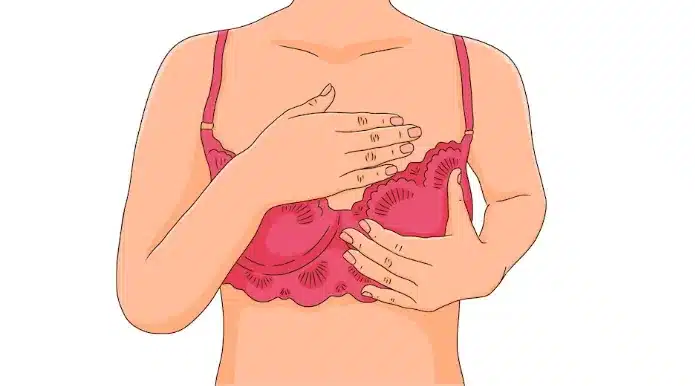After undergoing breast augmentation, proper aftercare is crucial to facilitate the healing process, manage pain effectively, and address common issues such as swelling and bruising. Implementing a comprehensive postoperative plan that includes pain management strategies and techniques to minimize swelling and bruising can greatly contribute to a smoother recovery and optimal results. By adhering to these aftercare protocols, individuals can navigate the post-surgical period with greater comfort and confidence, promoting a successful outcome.
Different Types of Breast Augmentation
Breast augmentation is a popular cosmetic procedure that aims to enhance the size and shape of a person’s breasts. Whether it’s to improve self-confidence, restore breast volume after pregnancy or weight loss, or achieve a more proportionate figure, breast augmentation can be a life-changing experience for many individuals. However, the journey to achieving the desired results doesn’t end with the surgical procedure.
Before delving into the importance of breast augmentation aftercare, it’s essential to understand the different types of breast augmentation procedures available. The two primary methods include:
Implant-based Augmentation
This approach involves the insertion of silicone or saline implants to increase breast volume. Implant-based augmentation provides customizable options in size, shape, and projection, allowing individuals to achieve their desired aesthetic goals.
Fat Transfer Augmentation
Instead of implants, this technique involves transferring the patient’s fat from other areas of the body, such as the abdomen or thighs, to the breasts. Fat transfer augmentation offers a more natural alternative for individuals seeking a moderate increase in breast size.
Types of Implants
- Silicone Gel Implants: Feel more like natural breast tissue. If the implant leaks, the gel may remain within the implant shell or escape into the breast implant pocket.
- Saline Implants: Filled with sterile salt water. They can be filled at the time of surgery to allow for minor modifications in implant size. If they leak, the saline will be absorbed and naturally expelled by the body.
Procedure
The procedure typically involves making an incision in one of several locations: under the breast (inframammary), around the nipple (peri areolar), under the arm (trans axillary), or in the belly button area (trans umbilical). The choice depends on various factors, including the type of implant, the degree of enlargement, the patient’s anatomy, and patient-surgeon preference.
After making an incision, the surgeon separates the breast tissue from the muscles and connective tissue of the chest. This creates a pocket either behind or in front of the outermost muscle of the chest wall (pectoral muscle). The implant is then positioned within this pocket and the incision is closed with sutures, skin adhesive, or surgical tape.
Both techniques have advantages and considerations, and your surgeon will guide you in choosing the most suitable option based on your specific needs and preferences.
Clinic contact number: +989371200167

Innovations from Leading Experts and Institutions
Breast augmentation aftercare is a critical component of the recovery process, ensuring optimal outcomes and patient satisfaction. Renowned institutions like Johns Hopkins University and the Mayo Clinic have been at the forefront of research and development in post-operative care strategies, contributing significantly to the field’s body of knowledge. Esteemed professionals, including Dr. Patricia McGuire and Dr. Scot Glasberg, have published extensively on the subject, emphasizing the importance of individualized aftercare plans.
These plans often include recommendations for managing discomfort, guidelines for activity levels, and protocols for monitoring implant condition over time, incorporating specialized terms such as “capsular contracture” prevention and “seroma” management to educate patients on potential complications.
In recent years, statistics have illuminated the paramount importance of comprehensive aftercare in breast augmentation procedures. For instance, a study conducted by the American Society of Plastic Surgeons highlighted a notable decrease in revision surgery rates when rigorous aftercare protocols were followed, with patient satisfaction scores exceeding 90%.
The most active company in this arena, Allergan, has partnered with hospitals and clinics to improve aftercare services by providing detailed educational materials and supporting clinical studies aimed at enhancing post-operative recovery. These collaborations have led to innovative aftercare products and techniques designed to minimize recovery time, reduce the risk of complications, and improve the overall patient experience, demonstrating the industry’s commitment to advancing care standards in breast augmentation.
What Not to Do During Breast Implant Aftercare
During breast implant aftercare, it’s essential to adhere to specific guidelines to promote optimal healing and reduce the risk of complications. Firstly, it’s crucial to avoid strenuous activities and heavy lifting during the initial recovery period, typically for at least a few weeks following surgery. Engaging in activities that strain the chest muscles can disrupt the healing process and increase the risk of complications such as implant displacement or capsular contracture. Patients should follow their surgeon’s recommendations regarding activity restrictions and gradually reintroduce physical activity as directed.
Secondly, patients should refrain from smoking and limit alcohol consumption during the recovery period, as these substances can impair blood flow and hinder the body’s ability to heal properly. Smoking, in particular, is known to increase the risk of complications such as infection, delayed wound healing, and poor scarring. Avoiding tobacco and alcohol can support the body’s natural healing processes and contribute to better outcomes after breast augmentation surgery.
Lastly, patients should avoid making any significant changes to their diet or lifestyle without consulting their surgeon first. Certain medications, supplements, and herbal remedies may interfere with the healing process or increase the risk of bleeding or other complications. Patients should inform their surgeon about any medications or supplements they are taking and follow any dietary restrictions provided by their healthcare provider. Additionally, patients should refrain from wearing underwire bras or engaging in activities that put pressure on the breasts during the initial healing phase to prevent discomfort and ensure proper implant positioning. Following these guidelines can help promote a smooth recovery and achieve the desired results from breast augmentation surgery.

20 Breast Augmentation Aftercare Measures
Breast augmentation aftercare is a comprehensive set of practices and guidelines designed to promote healing, minimize complications, and ensure long-lasting results. Here are 20 essential aftercare measures to follow:
Breast augmentation is a cosmetic surgical procedure that has gained popularity over the years, allowing individuals to enhance the size and shape of their breasts. It offers a solution for those who desire to feel more confident in their appearance, achieve better symmetry, or regain lost volume.
- Wearing a Compression Bra: Your surgeon may recommend wearing a supportive compression bra to minimize swelling, provide stability, and help shape the breasts during the initial healing period.
- Managing Discomfort: Pain and discomfort are common after breast augmentation. Follow your surgeon’s instructions regarding pain medication to alleviate discomfort and promote restful recovery.
- Proper Incision Care: Keep the incision sites clean and dry, and follow any instructions given by your surgeon regarding applying ointments or dressings.
- Avoiding Strenuous Activities: Restrict physical activities, especially those involving the chest muscles, to prevent complications and promote proper healing.
- Sleeping Position: Sleep on your back to minimize pressure on the breasts and assist with the healing process.
- Stay Hydrated: Drinking plenty of water aids overall healing and helps flush out toxins from the body.
- Quit Smoking: Smoking can interfere with healing and increase the risk of complications. It’s important to refrain from smoking before and after the surgery.
- Maintain a Healthy Diet: A well-balanced diet rich in nutrients supports healing and boosts the immune system.
- Avoid Blood Thinners: Certain medications and supplements can thin the blood, which may lead to increased bleeding. Consult your surgeon for specific instructions regarding the use of medications.
- Follow Post-Operative Instructions: Carefully adhere to any post-operative instructions your surgeon provides, including medications, wound care, and follow-up appointments.
- Avoid Sun Exposure: Protect your incision scars from sun exposure by wearing appropriate clothing and using sunscreen with a high SPF.
- Gradually Resume Physical Activity: Once cleared by your surgeon, gradually introduce light exercises and activities to your routine.
- Monitor for Infections: Keep an eye on the incision sites for any signs of infection, such as redness, swelling, increased pain, or discharge. Contact your surgeon if you notice any concerning symptoms.
- Avoid Hot Tubs and Saunas: Heat and excessive moisture can increase the risk of infection, so it’s best to avoid hot tubs and saunas during the initial healing phase.
- Maintain a Stable Weight: Significant weight fluctuations can impact the long-term results of breast augmentation. Aim to maintain a stable weight through a healthy lifestyle.
- Wear Sun Protection: Once the incisions have fully healed, protect your breasts from harmful UV rays by applying sunscreen or wearing protective clothing.
- Massage and Scar Care: Follow your surgeon’s instructions on gentle breast massage techniques and scar care to optimize healing and minimize the appearance of scars.
- Avoid Underwire Bras: Avoid wearing underwire bras during the initial healing period to prevent unnecessary pressure on the breasts.
- Stay Positive: Emotionally and mentally support your healing process by staying positive, maintaining realistic expectations, and seeking the assistance of support groups or professionals if needed.
- Regular Follow-Up Appointments: Attend all scheduled follow-up appointments with your surgeon to monitor your progress, address any concerns, and ensure your recovery is on track.
The benefits of breast augmentation aftercare extend beyond recovery, ensuring long-term satisfaction.
You should not attend work, school, or extracurricular activities until 10 days following your procedure.Columbus Cosmetic
10 Benefits of Breast Augmentation Aftercare
- Enhanced Healing: Following proper aftercare measures significantly improves the healing process, allowing you to recover more quickly and comfortably.
- Minimized Complications: Adhering to breast augmentation aftercare guidelines helps reduce the risk of complications, such as infections, bleeding, and implant malposition.
- Long-lasting Results: By taking care of your breasts during the recovery period, you can extend the longevity of the surgical results.
- Reduced Swelling: Proper compression, rest, and other aftercare practices help minimize post-operative swelling.
- Improved Comfort: You can enhance your overall comfort during recovery by managing pain and discomfort through proper medication and care.
- Scar Minimization: Following scar care instructions and keeping incision sites clean can aid in minimizing the appearance of scars over time.
- Optimized Implant Settling: Following specific aftercare measures, such as wearing compression bras, helps the implants settle into their desired position.
- Prevention of Capsular Contracture: Strict adherence to aftercare measures reduces the risk of capsular contracture, a potential complication where scar tissue tightens around the implant.
- Psychological Well-being: Knowing that you are following the necessary breast augmentation aftercare measures can provide peace of mind and promote a positive psychological state during recovery.
- Long-term Satisfaction: By taking care of yourself after breast augmentation, you are more likely to experience long-term satisfaction with the procedure’s outcomes.
Breast augmentation aftercare is essential for optimal healing, minimizing complications, and maximizing the procedure’s benefits. By following these guidelines, you can significantly contribute to the success of your breast augmentation journey.
Breast augmentation is a popular cosmetic procedure that allows individuals to enhance the size and shape of their breasts. Two common approaches to breast augmentation are fat transfer breast augmentation and traditional breast implants. While both methods aim to achieve similar outcomes, there are distinct differences.


Summary
Breast augmentation aftercare is a crucial aspect of the overall breast augmentation process. Whether you opt for implant-based or fat-transfer augmentation, proper aftercare measures are vital to ensure optimal healing, minimize complications, and achieve long-lasting results. From wearing a compression bra and managing discomfort to following post-operative instructions and attending regular follow-up appointments, each step promotes a successful recovery.
In conclusion, when faced with the decision between a brow lift or eyelid surgery, it’s essential to consider various factors, including pain management, swelling, and bruising. Both procedures involve a degree of discomfort during the initial recovery period, but proper pain management techniques prescribed by your surgeon can alleviate much of this discomfort. Swelling and bruising are common side effects of both surgeries, but they typically subside gradually with time and diligent adherence to postoperative care instructions. Supportive bras, often associated with breast surgeries, may not directly apply to facial procedures like brow lifts or eyelid surgery, but they serve as a metaphor for the importance of supportive measures in aiding recovery.
Moreover, postoperative care may involve physical therapy to optimize healing and restore functionality, as well as dietary considerations to support the body’s recovery process. Ultimately, the choice between a brow lift or eyelid surgery depends on individual goals, anatomical features, and the recommendations of a qualified plastic surgeon. By carefully weighing these factors and discussing concerns with your surgeon, you can make an informed decision that aligns with your desired outcomes and ensures a smoother recovery journey.
Clinic contact number: +989371200167
FAQs
- How long should I follow breast augmentation aftercare measures?
Follow aftercare measures as your surgeon recommends, typically lasting several weeks, and maintain healthy habits for long-term results.
2. Can I resume physical activities after breast augmentation?
Avoid strenuous activities initially; gradually resume light exercises per your surgeon’s guidance.
3. What should I expect during the recovery period after breast augmentation surgery?
The recovery period following breast augmentation surgery typically involves some discomfort, swelling, and bruising around the chest area. Patients may experience tightness or pressure in the breasts as the tissues adjust to the presence of implants. Pain medication prescribed by the surgeon can help manage any discomfort during the initial recovery period. It’s essential to follow the surgeon’s post-operative instructions diligently, including wearing a surgical bra or compression garment, avoiding strenuous activities, and attending follow-up appointments as scheduled.
4.How long does it take to recover fully from breast augmentation surgery?
The duration of recovery varies among individuals but generally, most patients can return to light activities within a few days to a week after surgery. However, it may take several weeks for swelling and bruising to subside completely, and several months for the breasts to settle into their final position. Patients should avoid lifting heavy objects or engaging in vigorous exercise for several weeks post-surgery to allow for proper healing. While full recovery may take several months, patients can typically resume normal activities and return to work within a week or two, depending on the nature of their job.
5. Are there any specific aftercare instructions I should follow to ensure optimal healing and results?
Yes, following the surgeon’s aftercare instructions is crucial for promoting optimal healing and achieving the best possible results after breast augmentation surgery. Patients should avoid smoking and limit alcohol consumption during the recovery period, as these can interfere with the healing process. It’s also important to maintain a healthy diet, stay hydrated, and get plenty of rest to support the body’s natural healing mechanisms. Regular follow-up appointments with the surgeon are essential for monitoring progress, addressing any concerns, and ensuring that the healing process is proceeding as expected. Additionally, patients should adhere to any recommendations regarding scar care, breast massage, and implant maintenance to optimize long-term outcomes.
Sucuri WebSite Firewall – Not Configured (drroberthouser.com)
https://www.bbc.com/news/uk-northern-ireland-61930566




